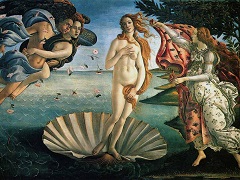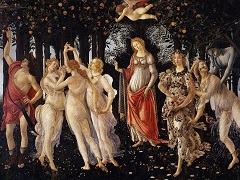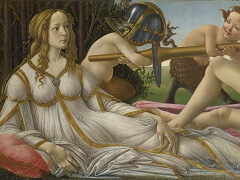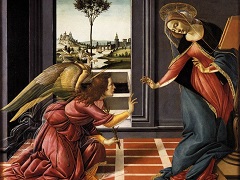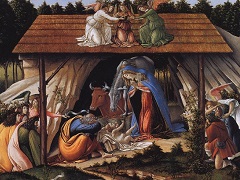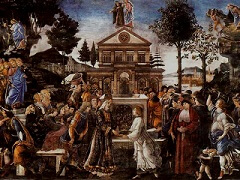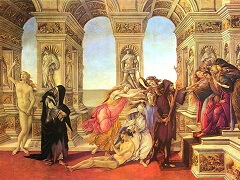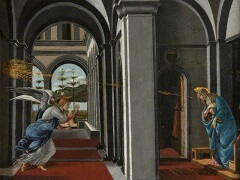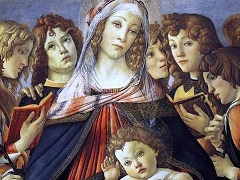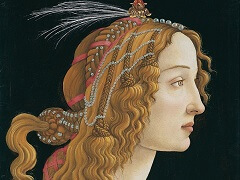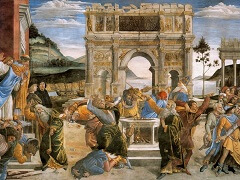Pallas and the Centaur, 1485 by Sandro Botticelli
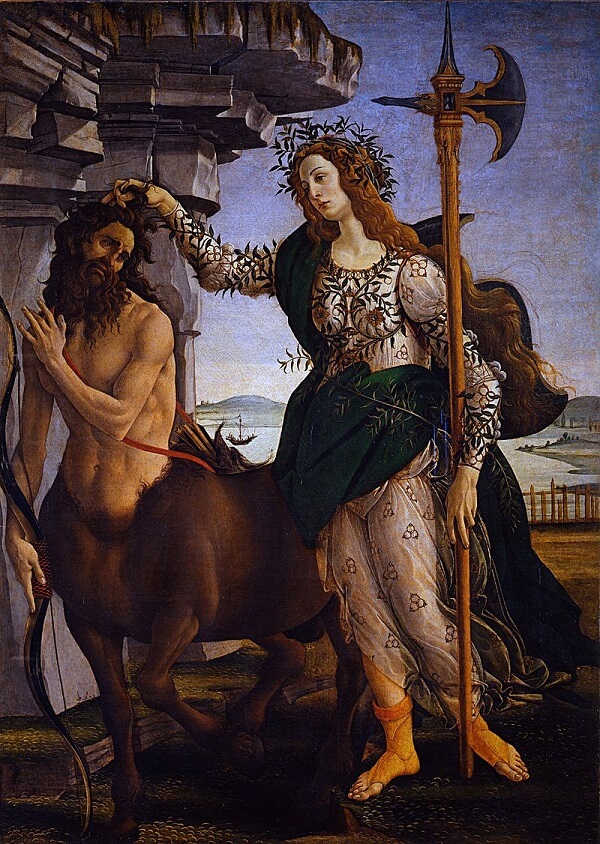
Pallas and the Centaur is hung together with Primavera in the city palace of Lorenzo di Pierfrancesco. It shows Pallas Athene, Goddess of Wisdom, standing next to a centaur. Athene's attributes include the lance, reinterpreted by Botticelli as a halberd, and the branches, entwined around her upper body and arms, of the tree sacred to her, the olive. As with Primavera, we are aware of no mythological narrative or classical written source which could have served Botticelli as a model for the combination of the centaur and Athene. However, the meaning may be reconstructed from the events portrayed in the picture, together with the references in this work to Primavera.
Pallas Athene and the centaur are in an enclosed area, bordered in the background by a palisade. Athene clearly has the function of a guardian, as indicated by the halberd in her hand, a weapon commonly used at that time only by sentries. The centaur would thus appear to have forced an entry into an area forbidden to him. However, Pallas Athene has surprised him just as he is in the process of testing his strung bow - note his middle finger, still bent - thereafter to let fly one of the arrows in his quiver. She has grasped his hair in order to prevent him from carrying out his intention, causing him to turn towards the Goddess, his face twisted with pain. Yet what forbidden territory has the centaur dared to enter? The answer to this question lies in the interpretation of the centaur as the personification of lust, his main pleasure consisting of hunting innocent nymphs - presumably his intention in Botticelli's painting as well. The picture would thus represent the victory of chastity over lust.

